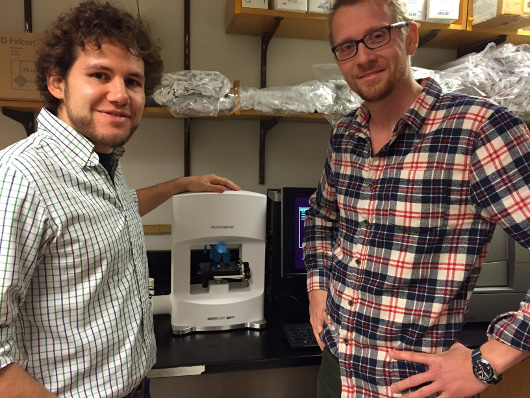
Nanolive is proud to announce the newest addition to our Science Advisory Board: Clemens Grassberger, PhD, of Harvard Medical School.
Dr. Clemens Grassberger was Nanolive’s first customer. He marked a historical moment for the live cell imaging company and we are more than happy that he is now part of the Science Advisory Board.
Nanolive:
“Congratulations for joining Nanolive’s science advisory board. Tell us a bit about yourself (scientific background, professorship, University).”
Clemens:
“My undergrad studies and my PhD were in physics, both from ETH Zurich, but the main focus of my research for the past 9 years has been cancer. I’m junior faculty at Harvard Medical School now, focusing on mathematical modeling of tumors and personalizing treatment regimen.”
Nanolive:
“You are a 3D Cell Explorer user yourself. Tell us about your experience with the live cell imaging tool and how this has impacted your research in your field.”
Clemens:
“The arrival of the 3D Cell Explorer was actually the reason I entered a new field myself, as it for the first time offered the possibility to gather the data necessary to answer certain questions. I hope Nanolive’s technology will enable developments similar to what is already happening for automated image processing of CT/MRI scans.”
Nanolive:
Is the 3D Cell Explorer a tool that you would endorse other researchers to use?
Clemens:
“Certainly!
Additional data about a system, be it a cell or a patient, gathered across multiple time points without interfering with its function, will always enable better understanding. However, as is often the case with revolutionary new technologies, it might take time until we can ask the right questions.”
Nanolive:
“What made you decide to be part of Nanolive’s scientific board?”
Clemens:
“Nanolive’s founders have managed to assemble a great team, and I share their excitement about offering a new, unique technology to the scientific community.”
Nanolive:
“How do you think could you best contribute to Nanolive’s development?”
Clemens:
“As I’m more on the applied side, working with medical doctors in a hospital environment, I hope I can offer new perspectives in how the 3D Cell Explorer can help advance clinical research and match patients to the right treatments. I think the potential of the technology when applied to patient biopsies is extensive, and could have broad long-term implications for personalization of treatment regimen.”
Thank you Clemens for this nice interview! Welcome on board!
